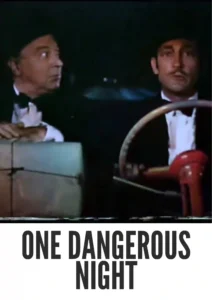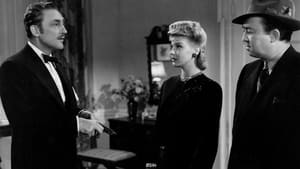Video Sources 0 Views

Synopsis

Dive into the suspenseful world of One Dangerous Night, a gripping crime mystery from 1943, now beautifully colorized for an immersive viewing experience. This film delivers a thrilling blend of mystery, suspense, and intrigue. Perfect for fans of classic whodunits and golden age cinema, this HD download brings a captivating piece of cinematic history to your screen. This movie is also known as The Case of the Missing Corpse.
One Dangerous Night follows the story of a series of mysterious events that unfold, entangling various characters in a web of secrets and peril.As the plot thickens, a detective finds himself immersed in a complex case involving a missing corpse, suspicious individuals, and a series of dangerous encounters. Amidst twists and turns, he must unravel the truth before it’s too late. The film delivers a narrative filled with tension, suspense, and unexpected revelations. Ultimately, One Dangerous Night is a thrilling mystery that captures the essence of classic crime cinema.
The film features a talented cast of actors who bring this suspenseful story to life:
- Warren William as Michael Lanyard/The Lone Wolf
- Eric Blore as Jameson
- Marguerite Chapman as Gale Halliday
- Roger Clark as Paul Talgate
- Allison Skipworth as Aunt Agatha
One Dangerous Night falls into the genre of crime mystery, delivering suspense and intrigue synonymous with classic golden age cinema. Its intricate plot and atmospheric setting make it a captivating film.
Released in 1943, One Dangerous Night was produced during World War II, a period that influenced many cinematic themes and styles. The film reflects the era’s fascination with mystery and suspense, offering audiences an escape into a world of intrigue and danger.
This colorized version of One Dangerous Night has been meticulously restored using modern digital techniques, enhancing the visual appeal while preserving the film’s original atmosphere of mystery and suspense. The colorization process involved carefully analyzing the grayscale tones of the original black and white footage and assigning appropriate colors to each scene. This painstaking process brings new life to the characters and settings, making the story even more engaging for modern audiences.
- : James Tinling
- : Jerome Odlum
- : Louis Joseph Vance (character)
- : Philip Tannura
- : Dwight Caldwell
- : Columbia Pictures Corporation
- : Columbia Pictures Corporation
- : 61 minutes
- : MP4
- : HD (1080p)
- : Compatible with most devices, including smartphones, tablets, computers, and smart TVs.
One Dangerous Night (1943) is celebrated for its clever plot twists, engaging characters, and suspenseful atmosphere. As a thrilling example of classic mystery cinema, it continues to captivate audiences with its intricate storytelling and memorable performances.
- : What is One Dangerous Night about?
- A: One Dangerous Night is a crime mystery about a series of mysterious events and a detective’s quest to uncover the truth.
- : Is this version of One Dangerous Night colorized?
- A: Yes, this version has been professionally colorized to enhance the viewing experience.
- : What makes One Dangerous Night interesting for fans of classic cinema?
- A: One Dangerous Night offers a glimpse into the golden age of crime mysteries, showcasing suspenseful storytelling and memorable characters.
- : What is the download format?
- A: The download format is MP4, which is compatible with most devices.
- : What resolution is the download?
- A: The resolution is HD (1080p), providing a high-quality viewing experience.
Watch One Dangerous Night Today!











